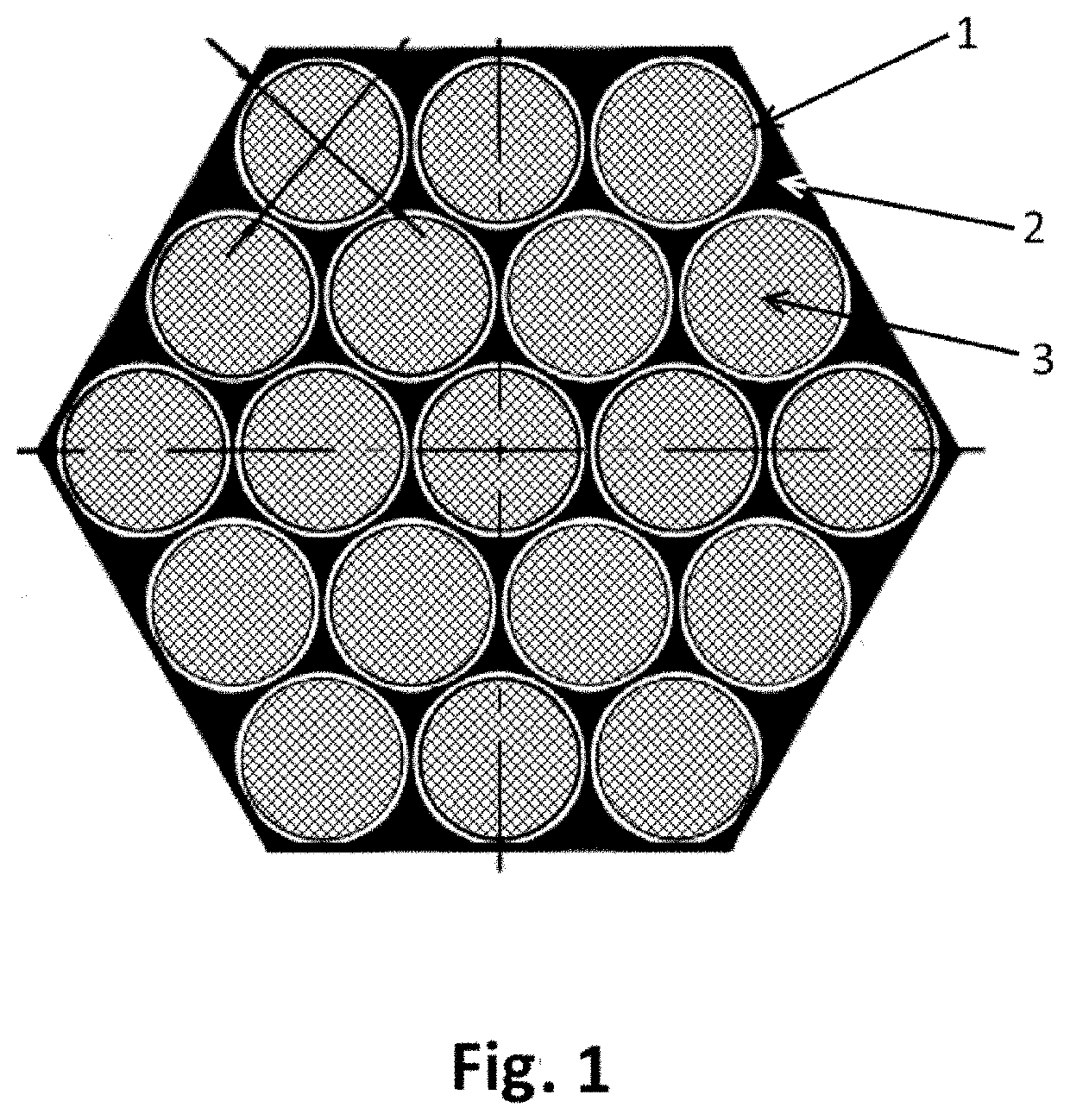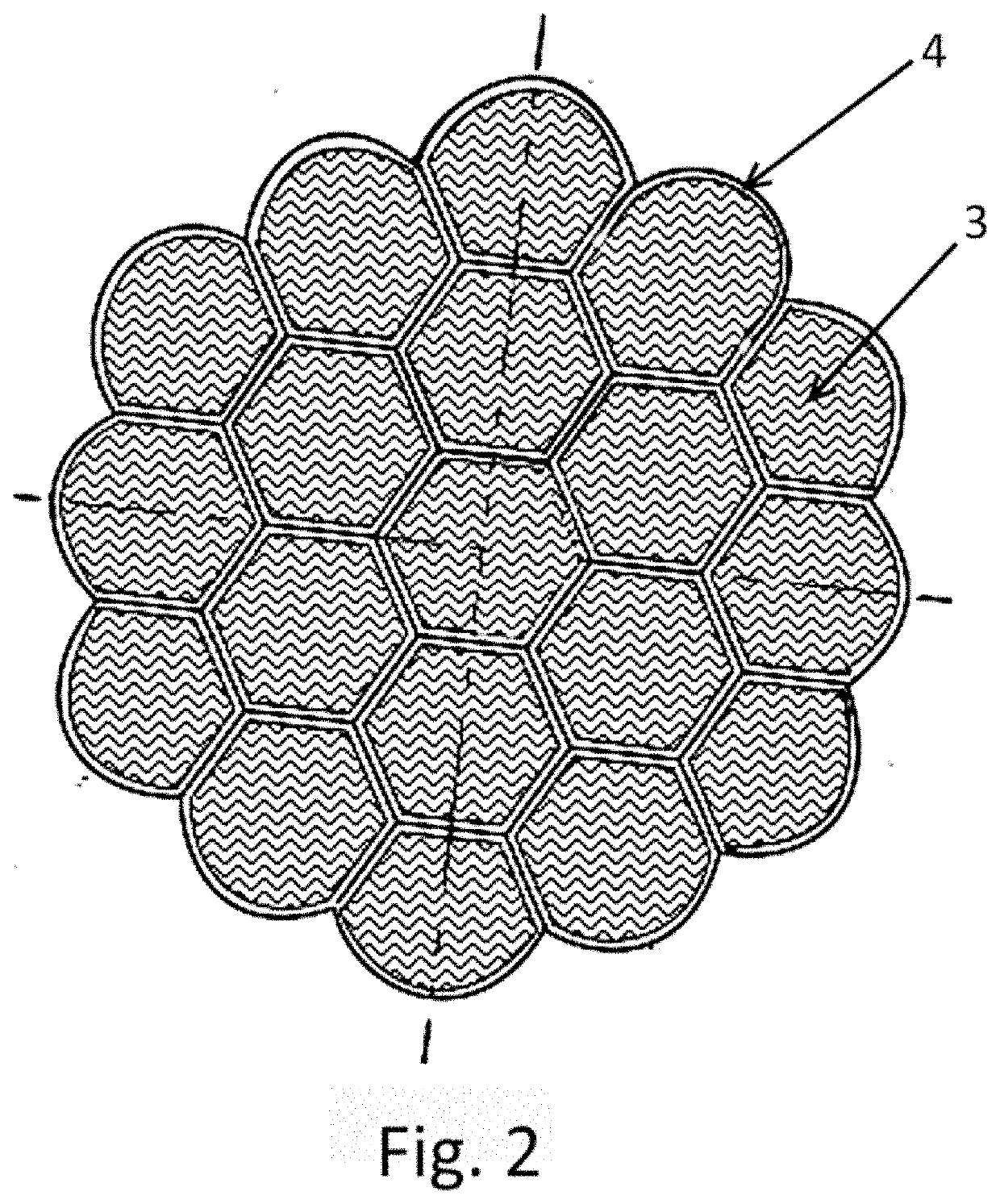System for the storage of fuel gases
a fuel gas and gas storage technology, applied in the direction of electrochemical generators, container discharging methods, vessel construction details, etc., can solve the problems of not being the most efficient, not being able to achieve the most efficient, etc., to achieve optimal safety
- Summary
- Abstract
- Description
- Claims
- Application Information
AI Technical Summary
Benefits of technology
Problems solved by technology
Method used
Image
Examples
first embodiment
[0048]FIG. 1 shows the schematic cross section of the first embodiment multi-capillary unit for the storage and transportation of hydrogen to the fuel cell. The structure consists of a set of identical cylindrical thin-wall glass micro-capillaries (1), tightly packed into a hexagonal or other matrix, closed from the ends with metal plugs (3) with sufficiently low melting point of the metal, having sufficiently good adhesion to glass and chemical resistance to hydrogen, such as indium-tin alloy In50Sn. After cooling the melt inside the capillaries below the melting point, a solid metal plug (3) is formed. The length of the plug L is determined from the condition of exceeding the adhesive force of the plug with the inner surface of the capillary above the force that pushes the plug out if the capillary is filled with gas with pressure P.
[0049]According to calculations, the length of the tube L must satisfy the condition:
L>Pr / (2k)
Here r is the internal diameter of the capillary, k is t...
second embodiment
[0054]The second embodiment is shown schematically in FIG. 2. In this case internal micro-capillaries (1) have the shape of hexagonal prisms with common faces, forming a honeycomb structure in cross section, and the outer micro-capillaries have a special shape, where instead of flat faces they have cylindrical faces (4) on the outer surface and therefore do not experience bending deformation when the structure is under the internal gas pressure that may be critical for the glass strength. The corresponding shape of the outer capillaries can be obtained, for example, from flat edges, if the multi-capillary structure of fully hexagonal prisms is first soldered at both ends and then heated. Arising internal pressure due to the air expansion inside the capillaries deforms the faces of the outer capillaries as necessary, if the viscosity of glass is low enough. To create the plugs (3), the initially open end of the micro-capillaries is immersed in the melted metal alloy and some rarefact...
PUM
| Property | Measurement | Unit |
|---|---|---|
| Fraction | aaaaa | aaaaa |
| Fraction | aaaaa | aaaaa |
| Fraction | aaaaa | aaaaa |
Abstract
Description
Claims
Application Information
 Login to View More
Login to View More - R&D
- Intellectual Property
- Life Sciences
- Materials
- Tech Scout
- Unparalleled Data Quality
- Higher Quality Content
- 60% Fewer Hallucinations
Browse by: Latest US Patents, China's latest patents, Technical Efficacy Thesaurus, Application Domain, Technology Topic, Popular Technical Reports.
© 2025 PatSnap. All rights reserved.Legal|Privacy policy|Modern Slavery Act Transparency Statement|Sitemap|About US| Contact US: help@patsnap.com



